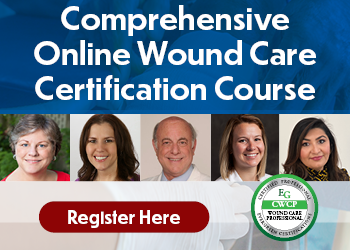Wound care is more complex than it's ever been.
And as the patient population with chronic wounds grows and the evidence changes, the healing journey is often long and arduous.
But not for you and your patients.
Register for the Comprehensive Wound Care Certification Course and master the latest wound care techniques, so you can offer patients faster healing and better outcomes.
- 16 diverse wound care topics, designed to advance your abilities to the next level!
- Presented by multi-disciplinary clinical wound skilled professionals
- Earn up to 26.0 CE Hours
- Guidelines from WOCN, NPIAP, ACWHTR, ADA, and more
- Designed for: RNs, NPs/APRNs, PAs, and PTs. DOs, MDs, and anyone desiring next-level wound care skills!
- FREE BONUS!! $299.99 Value! Earn your Certification as a Wound Care Professional!
Click here for Credit details | Click here for course objectives and outline
During this all-inclusive online course, you'll get intensive training with 10 leading wound care skilled professionals, including Laura Swoboda, DNP, APNP, FNP-BC, CWOCN-AP, Mark Hinkes, DPM, and more!
During the course, you'll discover the latest evidence and clinical insights you can use to tackle the most stubborn and hard-to-heal wounds, from chronic pressure injuries to diabetic foot ulcers.
PLUS: You'll be eligible to earn your credentials as a Certified Wound Care Professional (CWCP)* through Evergreen Certifications — at no additional cost. By becoming a CWCP, you distinguish yourself as a skilled professional with a commitment to the highest standards in wound care. Evergreen Certification demonstrates that you have the expertise to provide a consistent level of high-quality wound care. Display your certification with pride!
Here's a sneak peek at what you'll learn:
- Strategies to create a comprehensive wound care plan for all types of wounds
- How to break the cycle of chronic wound degradation — and finally heal wounds!
- Essential interventions to reduce needless amputation
- Key skills in palliative wound care for when the focus changes from healing to comfort
- Simple steps that will help you master differential diagnosis
- How to confidentially choose the appropriate dressing as the wound condition changes
- When adding telehealth services can improve your patient outcomes
If you want to heal wounds faster, feel more confident at the bedside, and give your patients the best possible care, this comprehensive course is for you.
*Professional standards apply.
Click here for Credit details | Click here for course objectives and outline

April Lumpkins, MSN, AGACNP-BC CWOCN-AP, CFCN
- Current health statistics to understand the impact of pressure injuries on patients and the healthcare system
- National Pressure Injury Advisory Panel's (NPIAP) most current pressure injury stages and
terminology
- NPIAP staging guidelines with photo examples
- Evolution of deep tissue injuries
- Identifying patients at risk for pressure injuries across the various care settings
- Identifying skin failure and how it leads to the development of pressure injuries
- Various risk assessment tools in identifying risks for PIs
- Prevention and management tools/strategies
- Support surfaces — reviewing the different bed options
- Offloading devices; turning support and offloading heels and other bony prominences
- Wheelchair support surfaces
April Lumpkins, MSN, AGACNP-BC CWOCN-AP, CFCN
- Diseases that wound healing
- Cardiovascular, respiratory, renal, liver, oncological, dermatological
- Diseases that cause immunodeficiencies
- How immunodeficiency affects the rate of healing
- How immunodeficiency increases risks for unrecognized wound infections
- Obesity and wound healing
- Medications and wound healing
- Discussion on the most common medications that affect wound healing
- Psychosocial factors and wound healing
- Patient's health literacy levels
- Access to healthcare
- Access to basic needs; nutritious food, clean environment, etc.
- Adherence to treatment plans
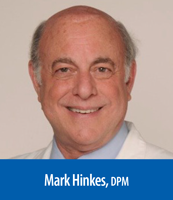
Mark Hinkes, DPM
- Diabetes and Foot Ulcers
- Why and how do the comorbid conditions develop?
- Risk factors for developing a foot ulcer
- Tips and approaches for A1c test... finger stick vs. CGM monitor... what does the data mean?
- Primary Care Provider
- Role in evaluating and managing the diabetic foot
- Guiding principles of care for people with or at risk for developing diabetes
- Business model of medicine... development and management of comorbid diabetic conditions with a focus on the diabetic foot
- Patient Stratification
- Prediabetes/Type 1/Type 2
- Reversing and preventing prediabetes... risk factors for Type 1 and Type 2 diabetes
- Insulin resistance as a precursor to Type 2 diabetes... and how to reverse it
- International Working Group on the Diabetic Foot (IWGDF) Criteria
- IWGDF risk stratification scheme
- Why categorize patients into one of the four risk groups?
- Preventing "category creep"
- DFU and Amputation
- Causes of DFU and the relationship between DFU and amputations
- Charcot foot
- Neuropathy, Loss of protective sensation (LOPS), PAD, traumatic triggering events, and pedal deformities
- Diabetic Foot Exam... Value of the IWGDF foot exam and the components of the exam
- Prevention of DFU, Amputations and Risk Mitigation
- Future of ulcer and amputation prevention
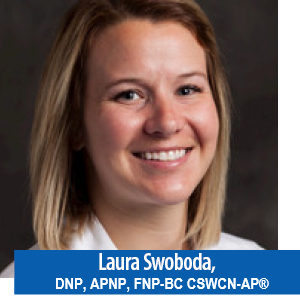
Laura Swoboda, DNP, APNP, FNP-BC, CWOCN-AP
- Considerations for advanced therapy selection
- Healing process stages
- Wound and peri-wound tissue assessment
- Wound type
- Insurance considerations
- Principles of Advanced Therapy Usage
- Wound bed preparation
- Mechanism of action and usage of advanced wound therapy
- Negative pressure wound therapy (NPWT)
- Transcutaneous and hyperbaric oxygen
- Grafts and matrices
- Autologous treatments
- Energy therapies
- Limitations of Advanced Wound Therapies
- Research gaps
Laura Swoboda, DNP, APNP, FNP-BC, CWOCN-AP
- Assessment considerations for debridement
- Tissue types
- Conditions and disease states
- Skin pathophysiology
- Biophysical indications for debridement
- Biofilm
- Bioburden
- Healing cascade
- Benefits, limitations, and usage of multiple debridement modalities
- Sharp
- Conservative sharp
- Mechanical
- Enzymatic
- Biologic
- Chemical
- Autolytic debridement
- Case compendium of debridement accomplished utilizing multiple methods
Laura Swoboda, DNP, APNP, FNP-BC, CWOCN-AP
- Review atypical ulcers
- Prevalence and incidence
- Definition
- Review typical and atypical wound assessment findings
- Tissue types
- Edges
- Types of atypical wounds
- Review clinical presentation and treatment of a subset of atypical wounds
- Calcinosis cutis
- Infectious ulcers
- Cancerous lesions
Laura Swoboda, DNP, APNP, FNP-BC, CWOCN-AP
- o Anatomy and physiology of the skin as they relate to skin function
- Review wound healing process
- List and describe types of tissue damage
- Describe where wounds become stalled
- Age-specific changes in skin and skin function
- Considerations of skin changes and wound/ tissue types
- Components and findings of wound assessment
- How to measure a wound
- Tissue types
- Periwound
- Drainage
- Wound edges
- Wound Types
Laura Swoboda, DNP, APNP, FNP-BC, CWOCN-AP
- Palliative wound care and what constitutes a palliative wound
- When to choose palliative care
- Wound healing v symptom palliation
- How to prioritize symptom relief
- Common palliative care wound types and review management considerations
- Wound in patients with cancer
- Fungating tumors
- Cancerous wounds
- Arterial ulcers
- Non-adherence to medical plans can in medically complex patients
- Overwhelming comorbidities
- Core management concepts of palliative wounds
- Infection prevention
- Pain reduction
- Odor and drainage management

Monali Zaveri-Hastings, MS, RD, CDCES, NWCC
- Stages of wound healing
- Impact of macronutrients in each stage of wound healing
- Impact of micronutrients in each stage of wound healing
- Malnutrition
- Definition
- Impact on the overall process of wound healing
- Screening for malnutrition
- International clinical practice guidelines and their application in practice
- Nutrition recommendations
- Supplements — when to initiate
- Foods to avoid
- Patient Education
Click here for Credit details | Click here for course objectives and outline
- Discover how to assess for infection and biofilm
- Work through challenging chronic wounds
- Determine when palliative wound care is the best approach
- Up-to-date wound care medication management
- Explore the BEST and NEWEST dressing and wound supplies
- Expand your practice with telehealth: Improving wound care outcomes

Nilma Z. Elias Santiago, PT, DPT, WCC, CLT, OMS
- Different types of dressings
- Uses of each type of dressing
- Appropriate dressing based on the wound assessment
- Dressing Types
- Advantages of each dressing type
- Disadvantages of each dressing type
- Recommendations of wound dressings based on case studies
Nilma Z. Elias Santiago, PT, DPT, WCC, CLT, OMS
- Professional concerns in wound care
- Ethical issues
- Cultural competence in the delivery of wound care
- Scope of practice considerations
- Common legal issues encountered and interventions in prevention
- Interdisciplinary wound care
- Team approach
- Effective wound management
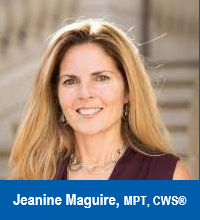
Jeanine Maguire, MPT, CWS®
- State of Chronic Wounds today
- Pop Aging
- Social Determinants- causal factors, relationship to risk factors, and chronic wounds
- Pressure Injuries, Lower Extremity Arterial, Venous Ulcers, Neuropathic, other
- Med-centric vs. Patient-Centered care
- Healing — what it takes
- Pathways of care by wound type
- Patient story with photos
- Determining goals of care
- Team Collaboration
- Who are the players?
- Game Rules
- Other drivers of care (wound literacy, perception, regulation, litigation)
- Implementation and Behavior Change
- Stages of Change
- Social Cognitive Theory
- The emotional impact of wounds
- Metrics that matter
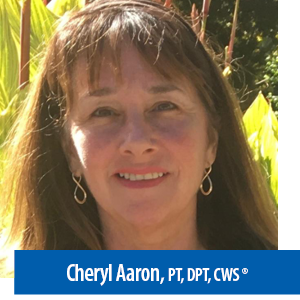
Cheryl Aaron, PT, DPT, CWS
- Assessment and Diagnostic Tools
- Loss of protective sensation
- Semmes-Weinstein 5.07 monofilament
- 128hz tuning fork
- Capillary refill
- ABI
- Managing the Diabetic Foot
- L.E.A.P
- Callus management
- Footwear
- Assessment of Bacterial Burden
- Signs of infection
- Silent infection
- Quantitative tissue biopsy
- Wound cultures
- Proper wound cleansing
- Orthopedic Assessment
- X-ray
- Osteolysis
- Charcot foot
- Osteomyelitis
- Therapy Modalities
- Getting the right dressing
- Offloading interventions/devices
- High and low-frequency ultrasound
- Pulsed lavage/jet ox
- Hyperbaric oxygen
- Topical/transcutaneous oxygen
- Electric Stimulation (HVPG)
- MIRE
- Wound Vac
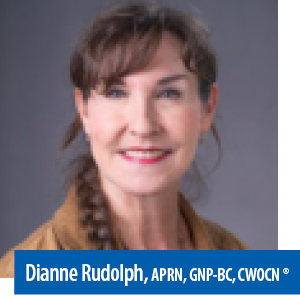
Dianne Rudolph, APRN, GNP-BC, CWOCN
- Morbidity and mortality issues regarding lower extremity ulcer
- Differentiate between venous leg ulcers arterial ulcers and diabetic foot ulcers
- Pain experiences in different types of lower extremity ulcers
- Noninvasive vascular studies: arterial dopplers, ABIs, TBIs, venous dopplers
- Current classification schemes and management for venous leg ulcers and diabetic foot ulcers
- CEAP model. Wagner and UTHSCSA classifications, Fontaine classification
- Compression modalities: indications and contraindications
- Identification and management of infection
- Debridement indications and types of debridement
- Offloading techniques and indications
- Evaluate surgical interventions for leg ulcers and indications for surgical consultation
- When to refer for surgical evaluation
- Podiatric surgical interventions
- Vascular/endovascular interventions
- Lymphedema pumps
- Investigate emerging technologies in leg ulcer management
- Use of allografts, xenografts
- Perfusion assessment/fluorescence angiography
- Moleculight

Katherine Piette, MS, BA
- Value of having access to scarce wound and ostomy specialists
- Improved the quality of care resulting from… accurate identification of wound etiologies and pressure injury staging, and evidence-based treatment plans to increase healing times, decrease hospital readmissions, etc.
- Improved patient quality of life in terms of reduction in pain, amputations, infections & sepsis
- Lower the cost of care deriving from lower supply costs, increased clinical staff productivity, etc.
- Key components of a virtual wound care program:
- Technology
- Regulatory compliance
- Operational processes — virtual assessments, treatment recommendations, etc.
- Success metrics
- Benefits and challenges of virtual wound care:
- Value of virtual wound care — validated studies and personal experience
- Virtual wound care practice challenges
- Case studies to understand the patient and clinician journeys with virtual wound care in different care settings — Home Health Care, Skilled Nursing, Facility, and Hospital at Home
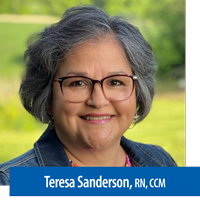
Teresa Sanderson, RN, CCM
- Welcome & Overview
- You will learn:
- How to market your business with impact
- Understand 2 strategies to increase referrals
- 3 ways to differentiate your business from all the rest
- Disadvantages of each dressing type
- You will learn:
- How I Grew My Hospice To $3M With Just A $6K Investment
- What I Wanted To Avoid
- What I Wanted To Achieve
- Be a beacon to everyone in need of end-of-life care information & resources
- Get past the gatekeeper and educate nurses in MD offices, case managers in hospitals, and
more
- Become a value-added partner and not just another face asking for a referral
- Get referrals WITHOUT asking
- Become the only logical choice in providers of your service
- Community Education/Engagement
- Connect with your CLIENTS where they are
- Educate NOCs (naturally occurring groups)
- Get new potential clients asking for you by name
- The BIG Lessons I Learned
- Investing in partner relationships FIRST yields BIG rewards
- The community is hungry for knowledge & resources & will act on meaningful information
- When you do what you say you will do…and then some — everyone becomes your champion
- Service from the heart combined with clinical excellence & transformational customer service will win every single time
It's never been easier to become a Certified Wound Care Professional!
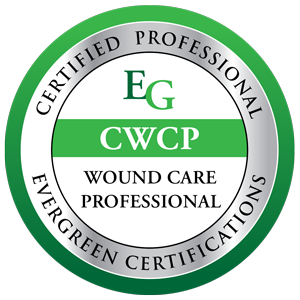
- Step 1: Watch this online course.
- Step 2: Complete the CE test(s) and instantly print your certificate(s) of completion.
- Step 3: Submit the Certification Questionnaire included in this training, and your application is complete.*
That's it! No hidden fees. No catch. Just certification made EASY.
*Professional standards apply.
Click Here to Learn More About CWCP Certification
Benefits of Certification
- Clinical expertise: Show patients, colleagues, and employers your practice is based on leading-edge research in this complex area of wound care.
- Patient trust: Certification shows your clients you care about providing the best care possible. It reveals your professional ability to take on challenging clients and succeed!
- Documentation of knowledge: Certification is both a professional and personal accomplishment. It's an unbiased barometer of your training and dedication to your practice.
- Professional recognition: Set yourself apart from the thousands of clinicians relying on outdated methods to treat their patients. Increase your opportunities for career advancement.
Click here for Credit details | Click here for course objectives and outline
We’re that confident you'll find this learning experience to be all that's promised and more than you expected.

